UP TO THE MINUTE
Advantages of metal walls - PODCAST TRANSCRIPT
January 30, 2024 at 12:00 p.m.Editor's note: The following is the transcript of a live interview with Kiki Redhead and Brynn Wildenauer from Sherwin-Williams. You can read the interview below or listen to the podcast.
Karen Edwards: Hello and welcome to MetalCast by MetalCoffeeShop. My name's Karen Edwards, and today, we're going to be talking about metal walls and their rise in popularity. And joining me for this episode are the experts from Sherwin-Williams, Kiki Redhead and Brynn Wildenauer. Welcome to MetalCast.
Brynn Wildenauer: Thank you.
Karen Edwards: So, before we dive into metal walls, can you just give our listeners a little bit of background about you and introduce yourselves? And Brynn, I'll start with you.
Brynn Wildenauer: Yeah. So, I'm Brynn Wildenauer. I'm the Architectural Color Designer for the Coil and Extrusion team at Sherwin-Williams. Been with the company a little over three years with about six, seven years of experience in color and trend and product design. I'm really excited to be here.
Karen Edwards: We're glad that you are here. And Kiki, tell us about yourself.
Kiki Redhead: Hi. Yeah, I am the Global Head of Color Material Finish and Trend here at Sherwin-Williams, and I run our design facility. Brynn's on the team here with me. I've been in color design and trend forecasting now for 23 years, and I've been actually back with Sherwin-Williams in this role for the last six. So, really excited about all the color and the design and the programs that we get to do here. And excited to talk about metal walls today.
Karen Edwards: Right. So, tell me more about why are you and Sherwin-Williams excited about metal walls? What's the buzz?
Kiki Redhead: Really, it's the variety. We're excited because there are so many opportunities and there's such a variety of options with metal walls, from colors, finishes, effects, textures, prints. It really gives us the chance here at Design House to create really unique creative collections of colors to help our teams sell color and to help the contractors to showcase all of the different opportunities that are out there.
Brynn Wildenauer: And I'll add to that, that there's a lot of opportunity within the technologies that we develop in the coil business around wall panels. And it's a really big area for growth for us, is really expanding on what are all of the options that we can offer from all of the finishes that Kiki was talking about, but also different technologies.
Karen Edwards: We're going to talk about some of the beauty that comes with walls. But before we go there, I want to talk a little bit about, why are metal walls more beneficial over walls that are made from other materials?
Brynn Wildenauer: Yeah. We talk a lot about the durability, the weather ability, the longevity. Wall panels that are metal coated are very low maintenance product. And at the end of the lives of the wall panel, the metal is recyclable. So, a lot of perks go into it. And also, aesthetics are very important when we talk about building facade.
Karen Edwards: So, durability, longevity, sustainability, a lot of topics that are growing in popularity and that building owners and homeowners are looking for.
Brynn Wildenauer: And I think too, to add onto to that, there's a lot of interest in the agricultural markets, but that interest is further expanding into lots of different building type because people are really seeing the benefits of metal building products.
Karen Edwards: Okay. So, that's a good segue into talking about how commercial and residential applications differ, because I can easily, I mean, if you're watching the video version of this, you can see we've got kind of a metal panel behind us, and I can easily visualize that on more of a commercial building. So, talk about the differences between commercial and residential applications.
Kiki Redhead: Yeah, a lot of it is the profiles that you're talking about, that you just mentioned. In residential, we see more board and batten type looks, plank. As you think about something like vinyl siding and the way that that's laid out on a residential, we can mimic that appearance with different metal profile, so the profile key in residential. In commercial, we see much larger or flat panels, or the corrugated style, like what we have behind us.
Karen Edwards: And we talk a little bit about mimicking. I'd like to expand on that more. I have seen things out there that look like wood or look like brick. How are they making that happen?
Brynn Wildenauer: It's a really good question. There's a lot of ways that we can kind of go through mimicry depending on what type of materials we're trying to emulate. When we talk about, there was a big resurgence of the terracotta trend as far as color goes, but we wanted to take it a step further and add a texture to it. So, not only are you getting that color space right on, you're getting that visual and tactile texture within the product. And we can do that with many different things. Prints being one of the main ways that we explore that mimicry. We can really dial in where the trends are going through color, and really enhance some either more traditional patterns or new patterns through color work and kind of that pattern development.
Kiki Redhead: And I'll say that, especially on residential, using prints and patterns, textures, different effects, create a color scheme and create a visual consistency with being able to either mimic the environment around. So, if you're out in the woods and you have a lot of oak trees around and you want to accent around maybe an entrance or an archway with oak printed pattern, right, you have the opportunity to be able to kind of create these really visually dynamic contrasts, but also then being able to complement the environment around you.
Karen Edwards: Excellent. So, I was curious too if they're, and you mentioned the environment and if you're in the forest or the woods, are you seeing different trends based on different areas of the country as to what's popular? Can you talk a little bit about that?
Brynn Wildenauer: Yeah, I think one of the major things that we're seeing is complementing the landscape. So, a lot of people are more interested in mimicking the materials that are in the environment around them. So, in the southeast, we're seeing those terracotta warmer tones, where in New York City, we're going to see more of the silvers, grays, metallic tones because of the environment that they're in. And that can really make a bold statement with however the specifier really wants the building to look. But it's really interesting to see the regional trends and even from more rural, all the way into urban environments, how that can change drastically within a couple miles of each other.
Karen Edwards: So, you mentioned architects and specifiers, and we work with them a lot on commercial buildings and commercial design. But for a residential homeowner, what kind of tools are out there to help them make the right choices?
Kiki Redhead: That's probably one of the most fun exciting things about our jobs, is being able to create collateral and these color collections that not only express the trends but showcase the classic. Help the customers, especially the homeowners, envision what these colors could look like in different color schemes, and used in complement or contrast with maybe their metal roofing color or maybe their window trims, their front door, and how all of these materials and colors can come together. So, being able to put visuals to that, that contractors can actually use and have access to, this really helps them sell the customer on the metal wall because now the customer, the homeowner can see all of the variety that they can choose from.
But curating that collection for them so that they're not overwhelmed with the variety of options, because there are so many. So, by us being able to curate that to help them come to a decision on which color or finish they would like to go with, that's part of our output here and how we help support our sales people, but then also the contractors that are working directly with the homeowners.
Karen Edwards: So, we have talked about this before with the color collection in one of our metal talks previously. So, look that up on metalcoffeeshop.com because that'll give you a deep dive into it. But maybe you could give us a high level of how you know what's popular and what's trending and how you put that together.
Brynn Wildenauer: So, within the Design House here, we do put together a trend forecast. So, the current collection that we have out is called Fuse, and that really explores the color trends from multiple different lenses, from what's happening in technology in the whole world, all the way down to, kind of distilled down into how it impacts metal building products. And from there, how it impacts residential, commercial, agricultural, different types of end uses for metal building products. So, that's where we start, is we research the huck out of everything that has to do with color and trends as far as the big huge concepts, and we figure out a way, and we distill it down into something that's applicable.
And so, that's kind of where we start. And then, we put together a package, like Kiki has said, that's not overwhelming, not too much information, but a nice, curated package that really can explain where are blacks moving, where are whites moving, those types of things and how that impacts all of the different industries that use metal building product.
Karen Edwards: With the longevity of metal, you want to make sure you make the right choice. So, I think making it easier for people who don't do this every day, right? How often do you put a metal roof on or metal walls on? You want to make sure that you do make that right decision. So, you did mention complementing the environment, but complementing a roof maybe. And are there any aesthetics to keep in mind if you are pairing metal walls with a metal roof? Can there be such a thing as too much metal?
Kiki Redhead: Well, now typically, we do see more metal-on-metal combinations on the commercial side of things. When we look at residential, because we're trying to integrate other types of materials to create more of an aesthetic that accentuates the architecture, we see more variety there. But one of the kind of, I won't say rules because we love to break rules, is that when we are confronted with a metal roof, let's say in more of a neutral tone, like a black or an off-black or charcoal, darker colors on the roof, then we typically see lighter colors on the walls, creating this contrast. Now, is there such thing as, you had mentioned, is there such thing as too much metal or is there such thing as too much contrast? Right? So, both of those things kind of have to be considered at the same time.
Switching up profiles can really, really help. And then, switching up colors is really important. So, darker roofs usually means lighter walls. If we see more neutrals on the roof, then in contrast to that, we see more chromatics on the walls. And again, playing with these chromatics, whether you want to contrast your environment or complement your environment, we typically see more colors in the taupes and tans type spaces. The blues, lots of navy's, slate blues, harbor blues. Greens like forest and sage. Brynn mentioned the terracottas, especially in the southeast. So, we kind of play along with how much contrast and what are the rules around kind of what's too much contrast, going with neutral roofs versus darker roofs, and then playing with the wall colors adjacent to that.
Karen Edwards: Brynn?
Brynn Wildenauer: And I think one important note to add there is a value of contrasting colors, but there is also contrast in materials. So, if something that you want as a homeowner is to have a darker roof with lighter walls, maybe the look you're going for is not all metal, and that's okay. But having that contrast of materials along with the contrasting color being a key consideration when picking the materials can be very helpful to get ahead of.
Karen Edwards: Sure, sure. Now, I'm just curious if there are any functional benefits to pairing metal roofs with metal walls, and particularly on commercial buildings, where the roof and wall come together, it's a very critical point. Does it enhance performance?
Kiki Redhead: In most cases, we would say yes. Obviously, metals' durability is going to enhance the performance and the weather ability. So, when you're thinking about different regions as well, you might be more in tune with adding, having both metal roofing and metal siding in certain environmental conditions, especially with different types of weather patterns. And we know that the warranties around metal roofing and metal wall panels is typically longer than other types of materials. So I would say, yeah, there would be definite benefits to having both a metal roof and metal walls.
Karen Edwards: Sure. And I think that the tools that you provide to help make decisions, the Fuse, color trends, the visualizers that the contractors have access to, make it a lot less scary when deciding to offer or choose metal roofs and walls. Just curious how, if a contractor wants to offer metal, or they're not, maybe they want to add it, what are some ways that they can get started and feel confident in their ability to educate the building owner or the homeowner and perform a quality installation?
Brynn Wildenauer: I think a great place to start is really researching how all of this stuff works, and we have a ton of resources on our coil coatings website. There's lots of resources on Rivers Coffee Shop. And so, there's a lot of opportunity to look into those types of things. And I think also, considering the types of finishes and colors that make sense for the region you're looking to serve. So, as we were saying, a lot of different things can happen in different regions, residential, commercial. So I think having kind of a grasp of what the goals are behind why are we doing metal? Okay, what are the best options? Is it having six colors or is it having 12 or is it having 40? What is the goal here? And I think there's a lot of good resources between our website and our experts that we have out in the field.
Kiki Redhead: Yeah, I was going to add that Brynn, our sales team, it should be your go-to, right? Obviously, Googling and jumping on our website, there's so many great resources out there. But the true experts are out in the field, our Sherwin-Williams sales rep. Not only are they going to be able to help you with the wall, but also with the roof and many other different types of metal colors and materials. And so, going to them, having that kind of single source of expertise out in the field can really help too, because you might have a question one day about roofing, but you might have a contractor that has a question the next day about wall panels. One day they might have a commercial question, the next day they might have a residential question and that's where our experts really can come into play.
Karen Edwards: Excellent. And I would be remiss if I did not mention the MetalVue Program that Sherwin-Williams has put together, that pretty much has all the resources that you need, from choosing your manufacturer to lead generation to sales training to installation training. And that's kind of like a one-stop shop that they've put together, so that's really exciting for contractors, I think, who want to get involved in that.
Kiki Redhead: Absolutely.
Brynn Wildenauer: Yeah. MetalVue has been a great program and has helped a lot of people get started, and give them, like you said, a ton of tools and resources. We also have many experts on the Sherwin-Williams side that support that program, so we've got a lot of resources here to help.
Karen Edwards: Yeah. I think that's important because a lot goes into providing that metal roof or those metal wall panel. And on the contractor too, if they've not done it before, they don't want to make a mistake, right, because that just makes the job profitability go right out the window. But these resources and tools are going to provide that support and education and training so that we don't have those mistakes.
Kiki Redhead: Yeah, and it also provides a lot of consistency as well. You're building relationships. The contractor's building relationships with their customers, and they're building relationships with the sales team at Sherwin-Williams. And being able to kind of create that consistency, we believe consistency across many things is very important, right? For us, it's consistency with our color. So, if you're choosing a color and you want this color, let's say on the roof and on the walls, you know that you're going to get that consistency through one single source. And so, that's really important to us, and we know that that's important to our customers.
Karen Edwards: It seems like metal just offers more choices when it comes to color, as compared to other materials. And why is that? Is it easier to apply those colors? Is it... Maybe let me in on that little secret. Why does metal have so many options?
Kiki Redhead: Well, I would say, probably one of the biggest elements is, with a lot of the natural materials, the colors are only available in what they are, right? So, if you are working with a specific type of wood, there are other ways to colorize it, but essentially, if you're working with it in its natural state, it's going to come in this color and that's going to be it. If you're looking at limestone or if you're looking at other types of natural materials, the color availability is going to be very, very limited.
Where, we have toners and colorants and chemists that can magically create these really unique formulations of being able to play around with many different types of the resources and the suppliers that we work with, that we can get all sorts of different effect pigment flakes and we can get different types of textures in. And then, the access to all these different colorants that allow us to create really unique hues in a very, very wide array of colors.
Brynn Wildenauer: And I'll also add to that, that goes back to our continuous R&D efforts that we have, and our teams all over the country really focus on making sure that we're providing all of the best, all of the options. Really making it a huge wide variety, which has become, to the point where it is overwhelming, so that's why we have the Design House, and Kiki and I around, so we can kind of help make sense of it all, because there's a lot of options. And so, we have a lot of resources that continuously try and improve the product that we're making, which oftentimes leads to more options. So, we try and focus on the things that are going to make sense for building products in the future, but also make sense for right now.
Karen Edwards: Excellent. Well, I want to thank both of you for being here today to talk about metal walls and all of the options that are out there. It's just been super interesting. And I know you do your color trends forecast every two years, is that correct?
Kiki Redhead: Yeah.
Karen Edwards: So, you're probably already working on the next one, right?
Kiki Redhead: We are. We actually got our first internal workshop yesterday, and we're going to have another one this afternoon. So, we've gathered and gathered and gathered all of our research. We do boots on the ground at a lot of trade shows in all areas of the building products industry and design industries. And now, we're sharing all of our findings with each other here, and we'll be kicking off, getting ready for the next iteration.
Karen Edwards: Excellent. Well, I encourage everyone to visit Sherwin-Williams coil coating's website, or their directory on MetalCoffeeShop, and you will be able to access the current trends report, which is very, very interesting. And I want to be sure to remind everyone to subscribe to MetalCast on your favorite podcast platform, and set your notifications so that you don't miss a single episode. And we will see you next time on MetalCast. Thanks, Brynn. Thanks Kiki.
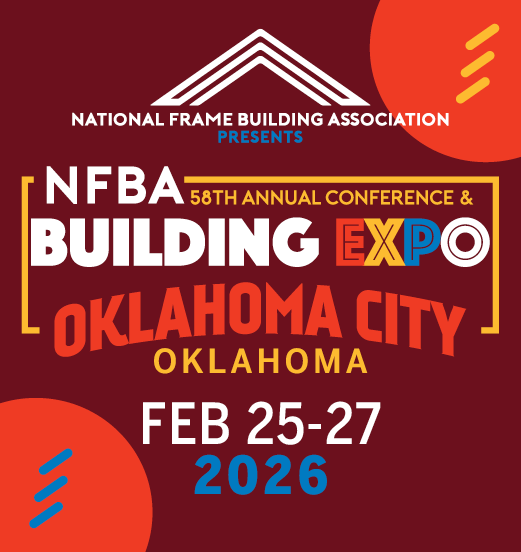

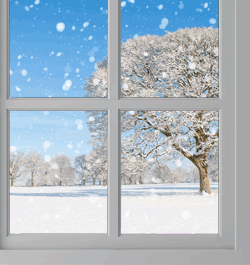









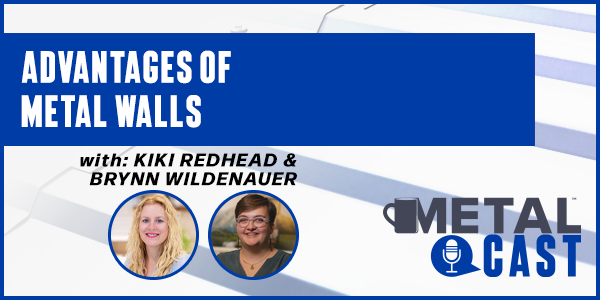
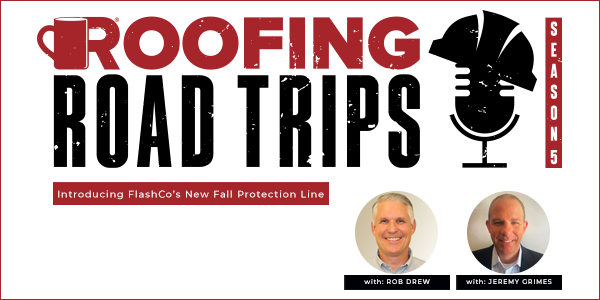
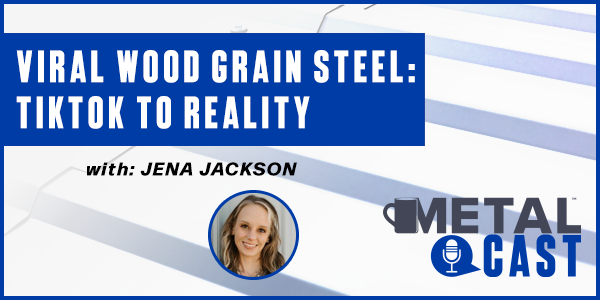
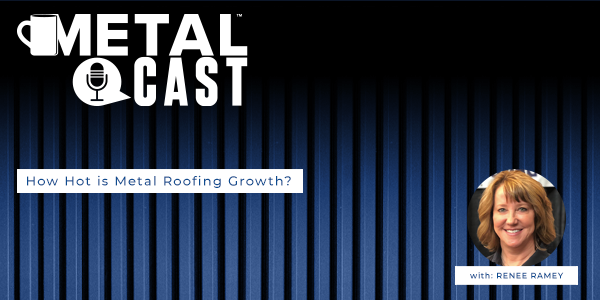

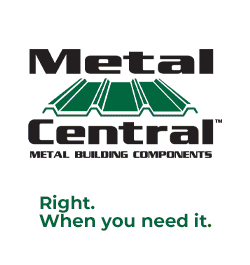




Comments
Leave a Reply
Have an account? Login to leave a comment!
Sign In